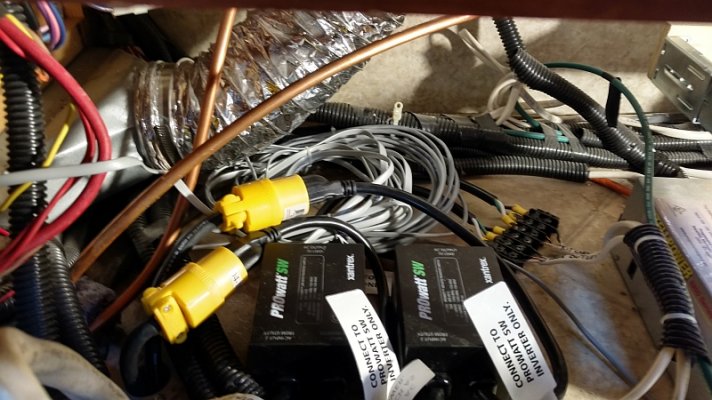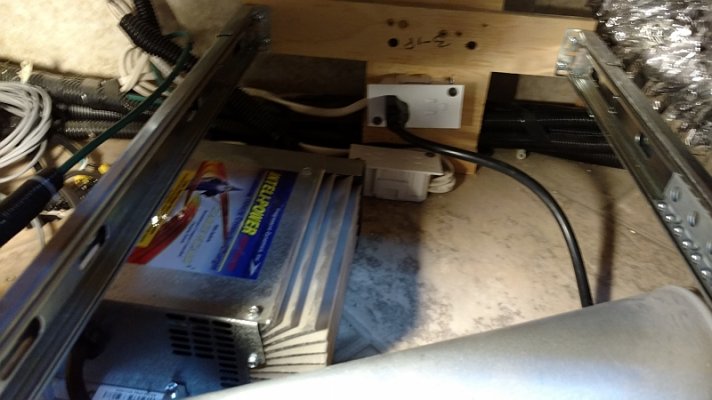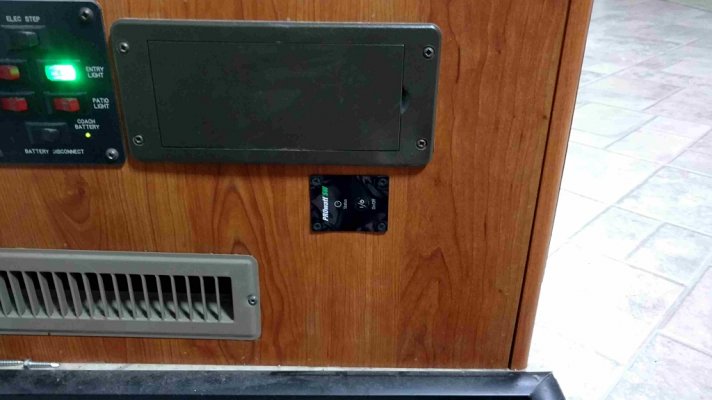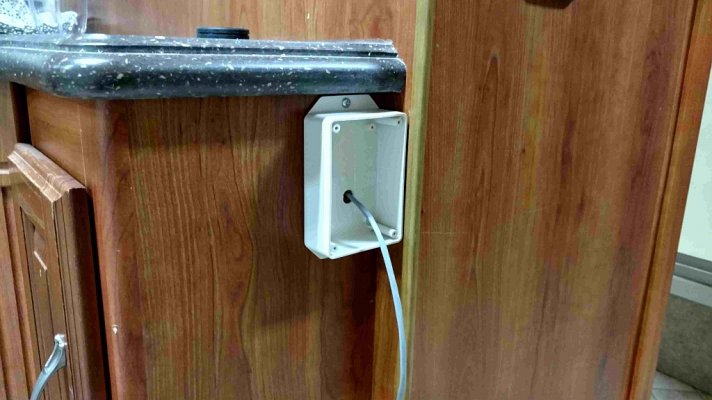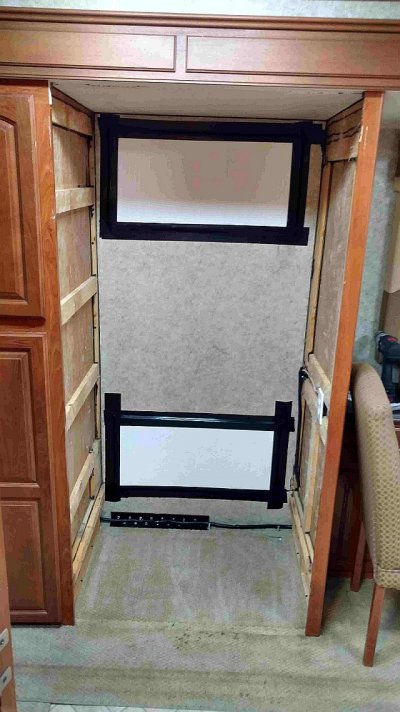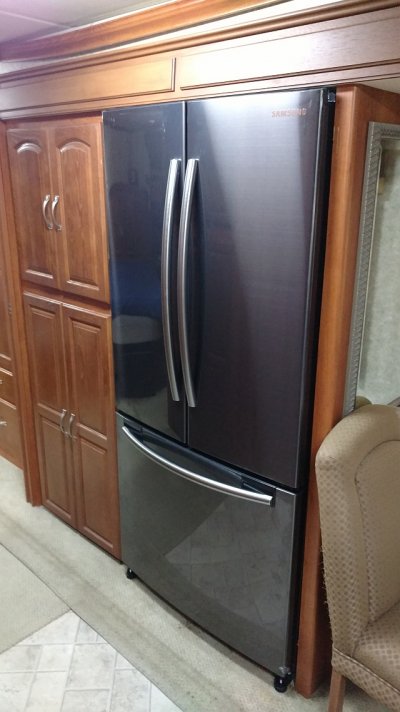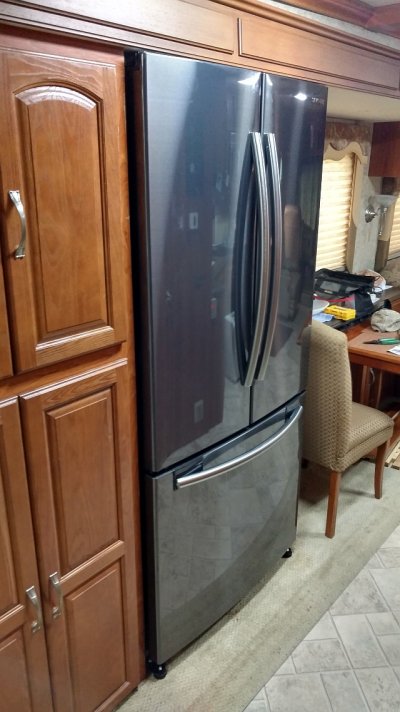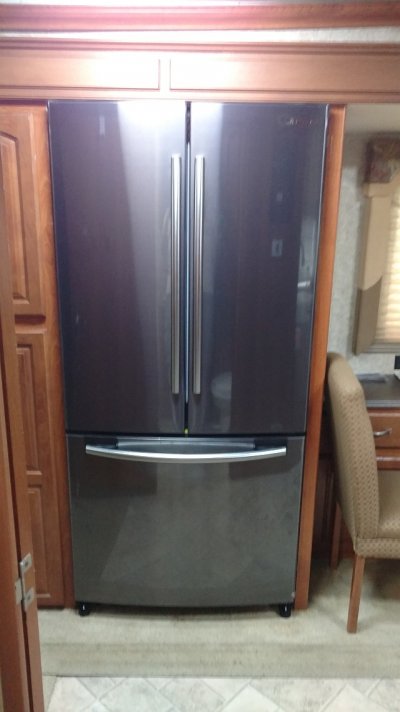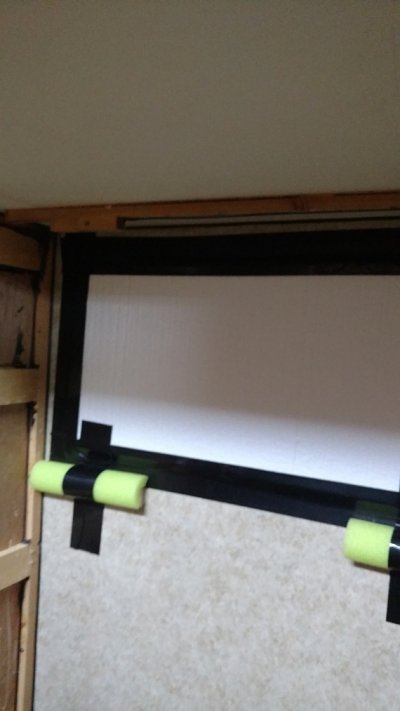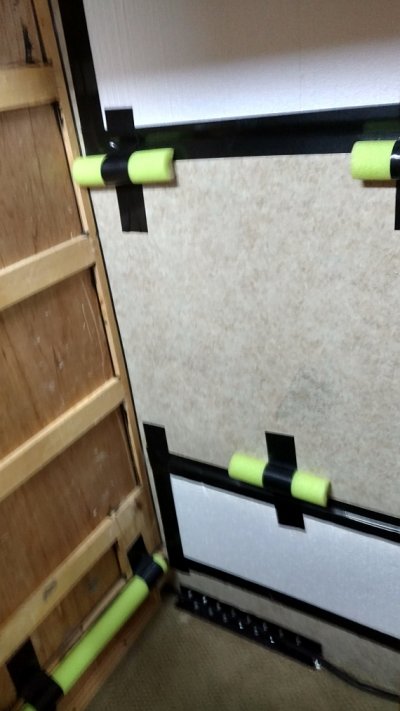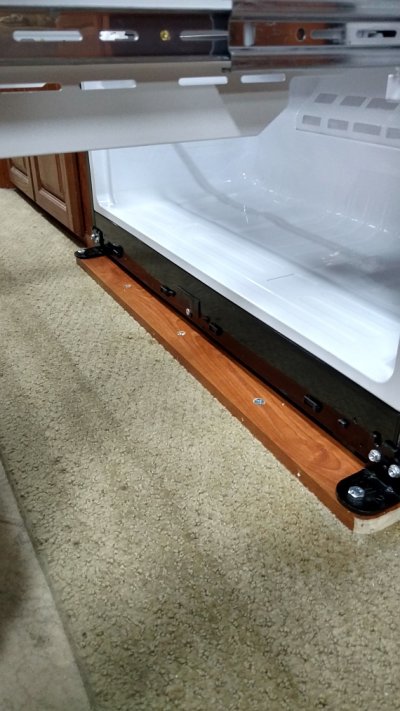Bobtop46
Well-known member
I finished prepping the space for delivery of the residential fridge and all the work under and behind the kitchen cabinets.
The Fridge prep: Removed old fridge (Dometic NDR1292) The space underneath was completely empty. Removed mounting shelf and frame work, capped off and removed gas line, removed insulation on the sides, installed new outlet, cut and capped 12v DC wires and put back in wire loom, removed upper and lower RV fridge vents, used aluminum diamond back to cover outside vent holes (triple caulked), and used 3/4" insulation sheets to fill inside holes.
Inverter install: The inverter will go under the space shown in the pictures here. I moved the converter outlet, moved a junction box to under drawers, moved converter over a little, installed 2 prowatt relays connected to two 15 amp breakers, made short extension cords (2 FT) to go down the hole I drilled in the floor, installed re-purposed plastic tube in the whole to protect wires (from old fridge gas line), installed inverter remote, and ran the cable for Trimetric-RV battery monitor.
In the pictures, Behind my breaker box (inverter1)- new whole in floor left front, relays center front, extra cable for inveter and battery monitor coiled up in the back
Under drawer (inverter2)- Moved outlet and junction box
Next up is to actually install the inverter down below.
The Fridge prep: Removed old fridge (Dometic NDR1292) The space underneath was completely empty. Removed mounting shelf and frame work, capped off and removed gas line, removed insulation on the sides, installed new outlet, cut and capped 12v DC wires and put back in wire loom, removed upper and lower RV fridge vents, used aluminum diamond back to cover outside vent holes (triple caulked), and used 3/4" insulation sheets to fill inside holes.
Inverter install: The inverter will go under the space shown in the pictures here. I moved the converter outlet, moved a junction box to under drawers, moved converter over a little, installed 2 prowatt relays connected to two 15 amp breakers, made short extension cords (2 FT) to go down the hole I drilled in the floor, installed re-purposed plastic tube in the whole to protect wires (from old fridge gas line), installed inverter remote, and ran the cable for Trimetric-RV battery monitor.
In the pictures, Behind my breaker box (inverter1)- new whole in floor left front, relays center front, extra cable for inveter and battery monitor coiled up in the back
Under drawer (inverter2)- Moved outlet and junction box
Next up is to actually install the inverter down below.

